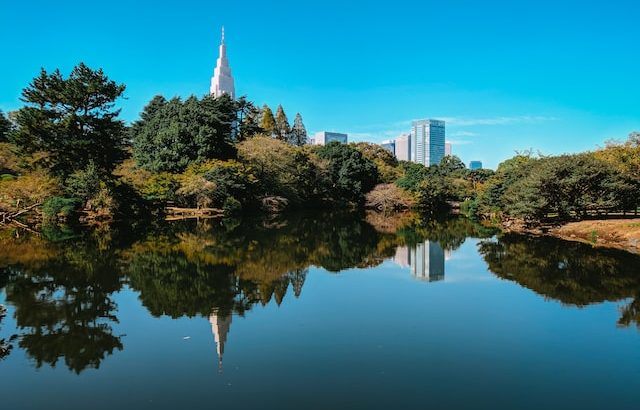Despite its reputation of being every bit the sprawling modern metropolis, Tokyo is home to a number of gardens and parks. What’s even more incredible is how well-kept and beautiful most of them are! Serving as urban oases to Tokyoites needing a break from the grueling pace of city life, they give locals the chance to immerse in the beauty of nature without having to go far. Shinjuku is no exception with its Shinjuku Gyoen National Garden.
You’d be forgiven to think of Shinjuku in terms of its lavish nightlife. It is Tokyo’s biggest red-light district after all. And it’s where you’ll find the infamous Golden Gai and Piss Alley. But in the midst of it all, Shinjuku Gyoen offers the perfect respite from the concrete cityscape that is Tokyo. With its wide-open spaces and uniquely themed gardens, it is an expansive and pleasant park that anybody can enjoy no matter the season. It’s popular for its beautiful cherry trees too!
Origins rooted in royalty
Shinjuku Gyoen used to be the domain of a feudal lord. Originally built in the Edo era, it was intended to serve as the residence of the then Lord Naito. In 1906, however, the garden was transformed into an imperial garden — with Emperor Meiji presiding over the opening. At the time, it was enjoyed not only by the imperial family but also by nobles and their invited guests.
During the Taisho era, from 1912- 1926, the western part of the garden saw the construction of a golf course. However, incessant air raids over Tokyo during World War II led to the garden’s destruction. Eventually, steps were taken to have the garden restored to its former glory. Eventually, the garden was converted into a national park in 1946. Despite this, the garden retained its association with the Imperial Family. On February 24, 1989, the garden served as the setting for the Showa Emperor’s funeral.
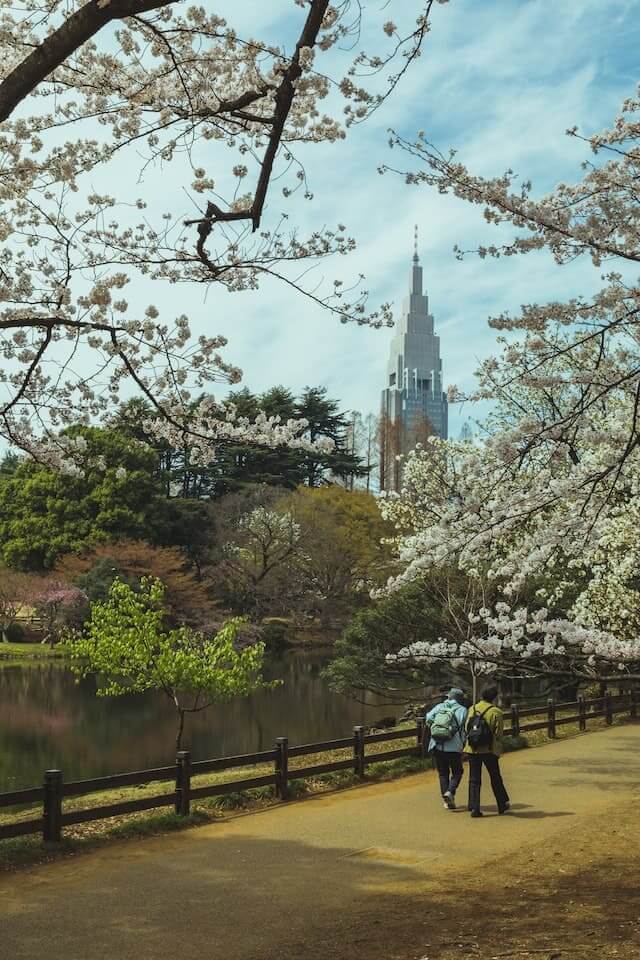
The Japanese garden
What makes the park unique is that it has three uniquely themed gardens within. The oldest of these gardens is the Japanese garden. Traditionally landscaped, it is set surrounding a pond replete with bridges and islets.
Several pavilions can be seen jutting out of this part of the park. For instance, there is the “old palace” or Kyu Goryotei, with its Chinese-style design. Also referred to as the “Taiwan Pavilion”, it was offered as a gift by the Japanese community in Taiwan on the wedding of Emperor Hirohito. The pavilion is a favorite among parkgoers as it offers some impressive views of the garden from its vantage point.
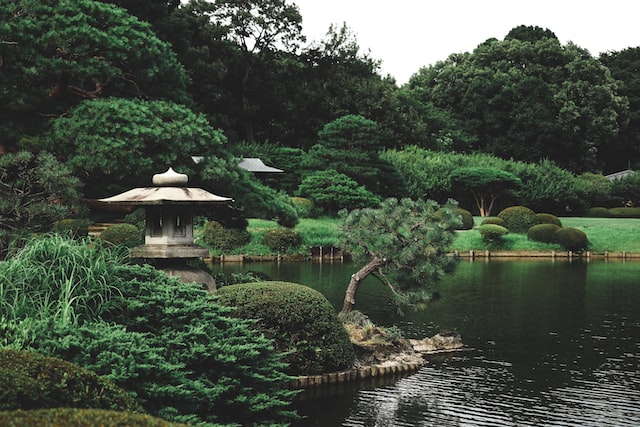
The garden sees a variety of events and activities throughout the season. In the fall, chrysanthemum exhibitions are featured here. These were personally cultivated by the renowned horticulturalists in the park. Then there are the cherry trees that go in full bloom come spring, which makes the area a favorite spot for hanami goers. There is even a tea house in the vicinity if you want to immerse in the ambiance while sipping a cuppa!
The English garden
This part of the park is landscaped in true British garden style. The area features a wide expanse of lawns with many trees offering shade. Wild cherry trees are also planted around these areas. With its wide, open space, this particular garden is perfect for friends and family who want to sit down, rest, or enjoy a picnic. It is particularly mesmerizing come cherry blossom season.
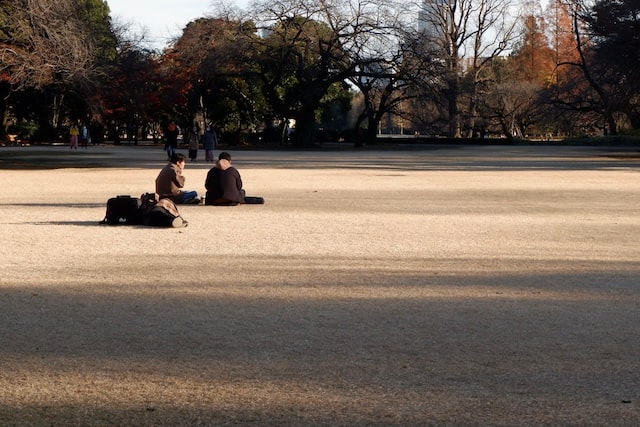
The garden is also known for its central tower. Jutting an impressive 30 meters high, it is one of the most easily recognizable emblems of the park. It is also covered with tulips which makes it such a beautiful sight to see when they bloom in spring.
The French garden
The third themed garden within Shinjuku Gyoen is located on the eastern side of the park. What’s notable about this French formal garden is its symmetrical design. This part of the park is credited to Henri Martinet who created it in the later parts of the 19th century. Martinet was the steward of the Versailles garden.
The multi-colored rosebushes are just some of the most notable aspects of the garden. It’s a particularly attractive subject for many a budding and professional photographer who visit the park. On top of that, this part of the park features around 500 flowers of 110 varieties which make for a breathtaking sight when they bloom.

The greenhouse
Near the park’s Ookido entrance is a huge greenhouse. Here, visitors can walk through a mini-jungle where a variety of tropical flowers and plants grow. Another notable feature of the greenhouse is the lotus-covered pond which typically goes in full bloom in the summer.
The glassed-in mini-jungle has a variety of unusual plants sourced from the subtropics. Some of what’s featured here are in danger of going extinct as well. Waterfalls and large trees also feature here. Aside from the pond area, there are also the desert, tropical and subtropical sections.
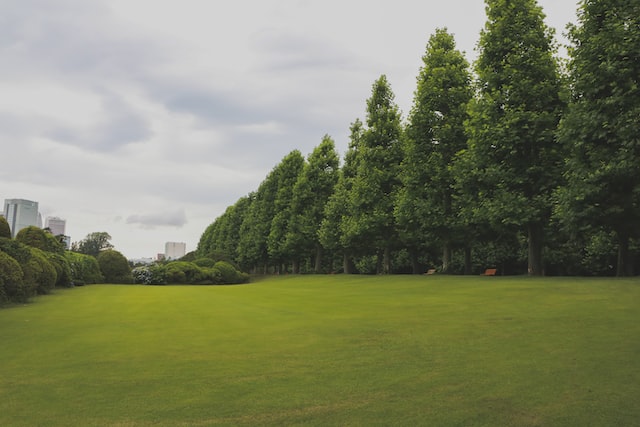
Shinjuku Gyoen is also known for its expansive wooded areas and expansive lawns — the perfect picnic setting. Kiosks and restaurants selling a variety of Japanese delicacies, street food, and snacks can also be found in the area. An information center is also within the vicinity for first-time visitors who might need help finding their way around the park.
Accessing the park requires paying an entrance fee. To the east, you can enter via the Ookido gate. If you’re coming from the south, you can enter via the Sendagaya gate. Meanwhile, you can access the park to the north via the Shinjuku gate.
Cherry blossom spectacle
If you ever find yourself in Tokyo when the cherry blossoms bloom, make Shinjuku Gyoen one of your destinations for flower viewing. This is one of the best places in the capital to experience hanami. In spring it’s more than 1000 cherry trees cover the park in various shades of pink and it’s a total feast for the eyes!

People visiting the park during this time will usually bring along lunch and snacks as they spend time soaking in the view under the flowering Sakura. Unlike Yoyogi Park, however, where booze is allowed, alcohol consumption is prohibited here. This makes the park an ideal hanami choice for families who plan on bringing along their kids and babies.
A favorite among anime fans
If you’re an anime fan, you’ll probably recognize some of the parts of the park being featured in the 2013 anime movie “The Garden of Words”. Makoto Shinkai of “Kimi no Na Wa” fame, chose Shinjuku Gyoen as the film’s setting to preserve its beauty should a natural disaster happen. It was only a couple of years before that when the 2011 Great Tohoku Earthquake occurred.
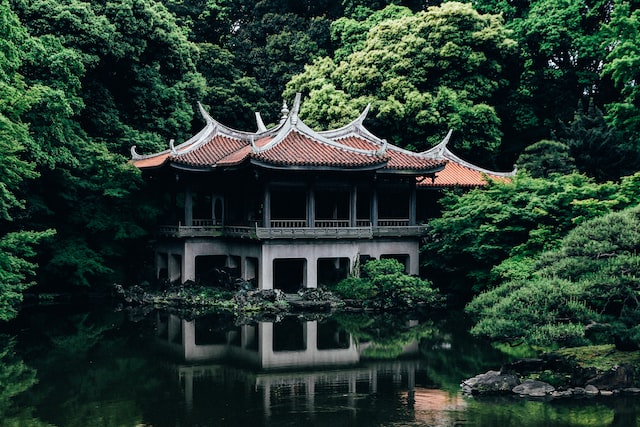
Many of the film’s scenes use actual photos of the park when illustrating the background settings. A particular small pavilion in the garden served as the setting of many of the film’s actions. Fans of Shinkai’s work will love recreating the beautiful yet bittersweet scenes of the anime here.
Shinjuku Gyoen in autumn
It’s not only in spring when the park gets packed but in autumn too! Thanks to its many trees and wooded areas, the place transforms into mesmerizing shades of red, orange, and yellow come fall. With the numerous variety of trees populating the park, its transformation into fall colors is nothing short of a scene from a painting!
Check out the maple trees as they strut their most vibrant fall shades. A good number of them can be found in the Japanese garden. Be sure to time your visit around the middle of November to December, if you want to truly make the most of the park’s fall colors.
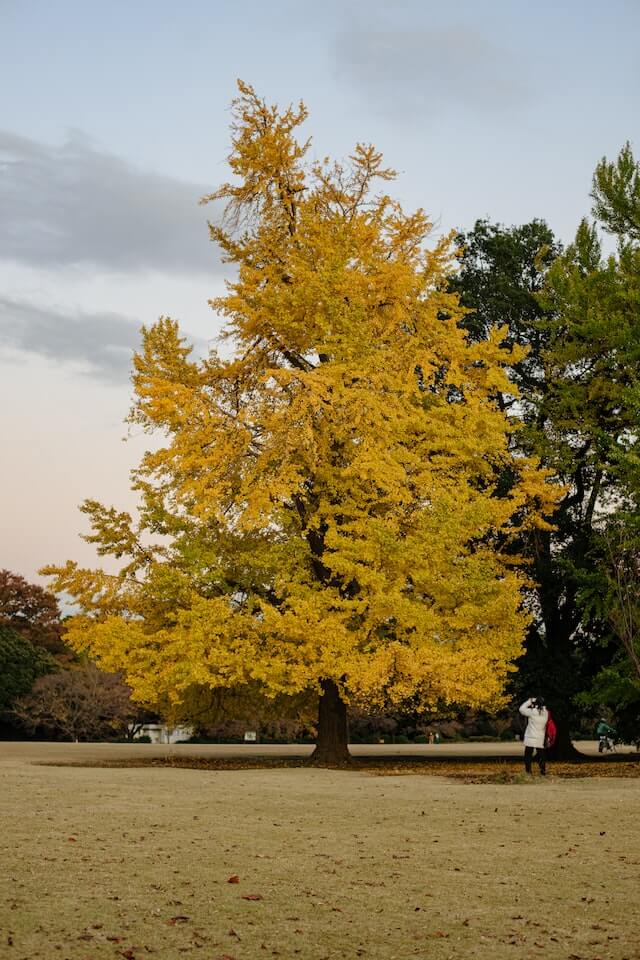
The perfect getaway in the middle of Tokyo
Tokyo is every bit as fun and exciting as you would expect a modern megalopolis would be. With its array of amusement parks, amazing city views, incredible shopping districts, and vibrant nightlife, it’s no wonder it’s on everyone’s bucket list of places to visit when going to Japan. Sometimes, however, city life can grind you down and you just want to step back and get away for a bit. When you’re pressed for time and can’t plan a trip to Kawaguchiko or Hakone to relax and unwind, Shinjuku Gyoen is the perfect getaway without having to leave the city.
